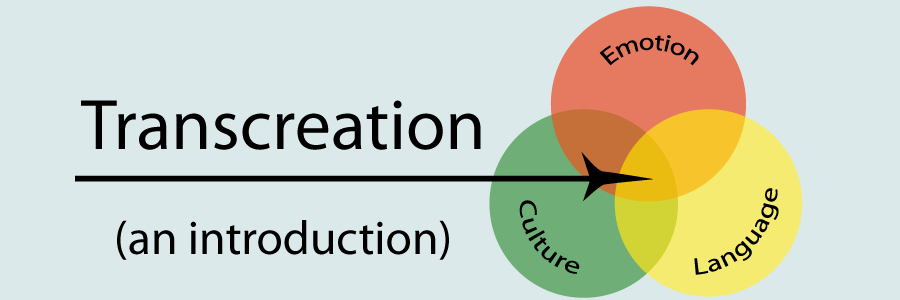What is transcreation? How is it different from translation and localisation? And what purpose does it serve? If you’re asking yourself these questions, keep reading for a short introduction to the wonderful world of transcreation!
What is transcreation? How does it differ from internationalisation, translation and localisation?
Transcreation is the process of adapting a message from one culture to another. It gives priority to preserving the source’s intent and effect, rather than its exact content. The concept is more important than the literal meaning.
Transcreation, to quote Christian Arno from Lingo24, “is about taking a concept in one language and completely recreating it in another language (…)”.
If you’re not sure of what distinguishes it from internationalisation, localisation and translation, here’s a handy guide:
- Internationalisation aims for standardisation and for the largest possible cultural common denominator. Transcreation aims for adaptation to a specific market and uses evocative, relevant and specific cultural references.
- Localisation implies a technical, as well as linguistic, process and applies to a great number of formats and domains. Transcreation implies notably a creative process with a narrower scope and applies to a more restricted number of formats.
- Translation is assessed on its faithfulness to the source and usually involves one translator at a time. Transcreation is assessed on efficiency of production and is usually performed by a team.
The term “transcreation” is a portmanteau of “translation” and “creation”. It is sometimes also called “creative translation” or “free-style adaptation”, among others. The focus is on the creativity, the vividness even, with which the message refers to the target culture.
Why do advertising and marketing use transcreation?
Marketing and advertising are the main fields in which transcreation is used. In these fields, localisation alone isn’t enough to get a message across with an effective impact on a target audience from another culture.
As international marketing strategies become more and more commonplace, the necessity to overcome the problems the linguistic and cultural barriers cause rises. Similarly, ever increasing competition makes it necessary for companies to stand out by demonstrating particular interest in the target audience. The growing emotional marketing trend also invites advertisers to appeal to specific cultural references that will reach a particular audience more effectively.
A local adaptation of a global marketing strategy also allows for more flexibility and hence greater efficiency.
How does transcreation work?
The process can start right at the beginning of a project, simultaneously with the development of the global strategy. It can also take place afterwards, at the product exportation phase, in adapting the existing strategy. Transcreation work takes place in close collaboration with the advertiser. The adaptation thus adheres as closely as possible to the strategy defined by the company.
Transcreators must perfectly understand the source message, its intent and its intended effect. They must convey each of these elements with optimal efficiency in the target culture. This is why the process requires dual expertise: linguistic and cultural on one hand, and marketing on the other.
Naturally, as with localisation in general, it is better to work with on-site specialists. They live in the target culture and know it perfectly.
There is so much more to say about transcreation! Although not yet well-recognized, it is a fast-expanding business. Its specificity makes it an essential complement to internationalisation and localisation for a product or brand image. Transcreation combines linguistic and cultural knowledge with marketing skills and creativity. It is indeed a very flexible activity. It will certainly hold an important place in marketing and advertising for many years to come!



